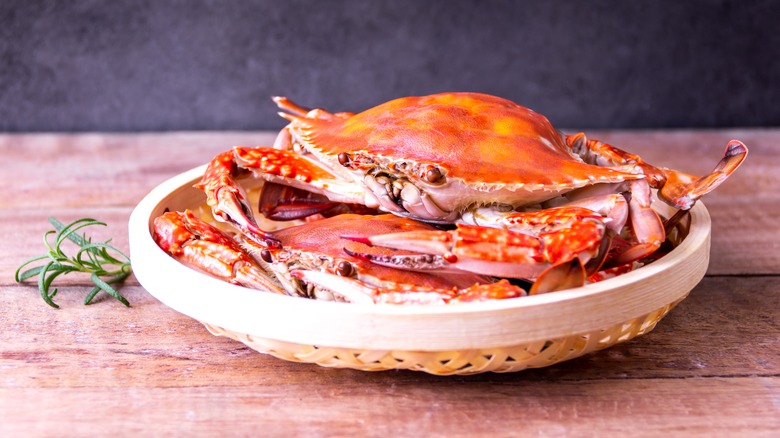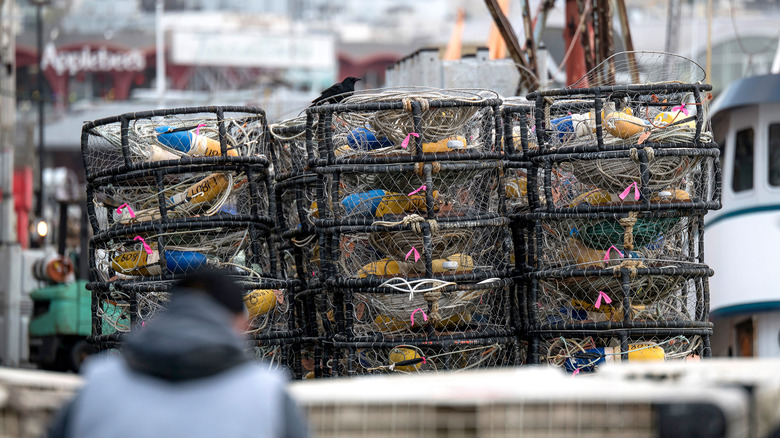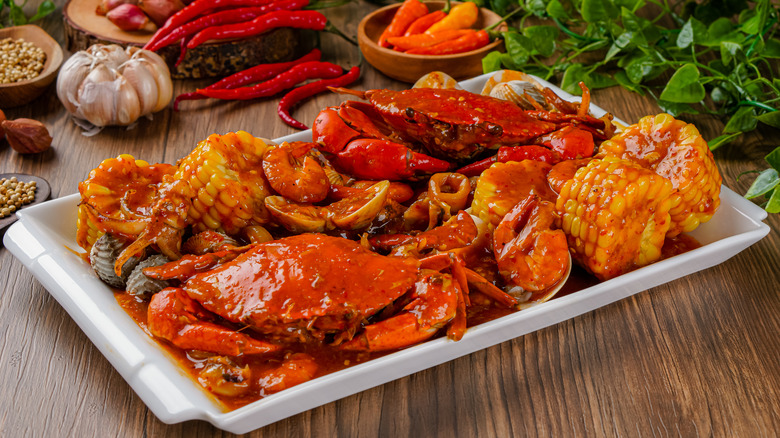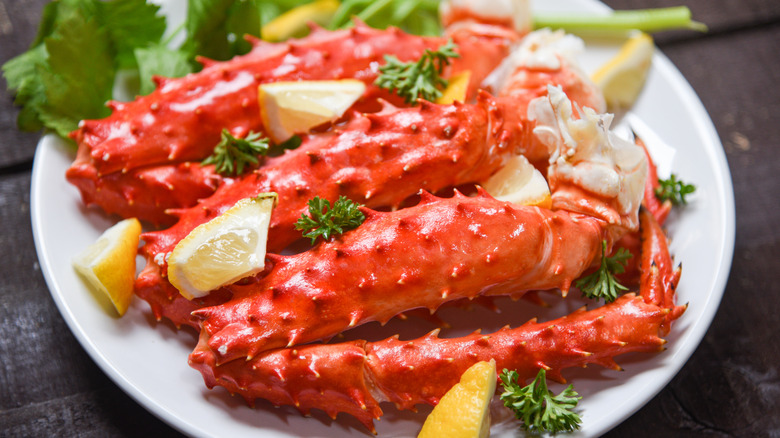The Real Reason Crab Can Be So Expensive
Picture this: You're out to eat and ready to indulge in a delicious seafood dinner. But upon seeing the price, you can't help but question: Why is it so expensive? Those crab cakes suddenly seem much less appealing. Seafood is generally pricier than casual fare, such as a burger and fries. To some, it's viewed as more of a fine dining option. And according to National Fisheries Institute, crab is one of the most-consumed variations of seafood in the United States, alongside options like shrimp and salmon.
It's used in plenty of recipes, from bisques to dips to even pizza. But the one thing these dishes have in common is that this tasty crustacean almost always comes with a high price tag. Though it's easy to question how restaurants and grocery stores can justify that price, there are a number of factors at play in determining the cost of such a dish.
Catching crabs comes with difficulties and regulations
Plenty goes into catching crabs; it's a time-consuming process. According to Crabbing Hub, commercial traps known as crab pots are laid on the bottoms of canals, oceans, or other bodies of salt water. The traps contain bait, which attracts these sea creatures. They're designed to let crabs in but not out, and once they're stuck, they remain there until a crabber returns to the trap to harvest the catch.
Crabbing Hub reports that the pots are left alone for as long as 36 hours to capture as many crabs as possible. Depending on the type of crab sought, traps can be as large as 150 square feet. Catching crabs also comes with regulations. According to The Cold Wire, crabs must be a certain size (this will vary by the type of crab) to be caught and sold to seafood restaurants. Since small crabs tend to be younger, this prevents fishers from taking crabs out of the water before they're mature. These factors all play a role in a crab's cost at a restaurant or grocery store.
Crabs are expensive to pack and ship
Once crabs are caught, they have a relatively short shelf life and need to be cooked soon after. Crabbing Hub says blue crabs, for example, which are popular in crab cakes, will only remain alive for about 24 hours, provided they are properly stored in a damp, cold area. Seafood restaurants close to the water likely use fresh crab meat, which only lasts about two days in the refrigerator before going bad, according to Epicurious. Workers will then have to remove the meat from the crab shells, which is a tedious process that must be done by hand and incurs labor costs (via Seafish).
But places off the coast will have to deal with extra shipping and storage expenses since they don't have easy access to bodies of water. This means restaurants incur additional costs because the crabs will potentially be shipped long distances, and need to be packed correctly to stay fresh.
Different crabs come with different price tags
Some varieties of crab are more expensive than others. According to Quality Seafood Delivery, king crabs have a limited harvesting season of about three months, making them less available and more expensive than other varieties. Plus, since king crabs are so large, they're dangerous to fishers. Those factors, combined with their rich flavor, make them the most expensive crab on the market. For example, 10 pounds of king crab can cost around $500.
Quality Seafood Delivery also reports that another pricey variation, the snow crab, usually runs around $200 for 10 pounds. These crabs have a longer harvesting season, making them less expensive. On the other hand, blue crab is far cheaper than either option because the crabs are smaller with an even lengthier fishing season. HowMuchIsit reports blue crab retails from $25 to $85 for a dozen crabs. In 2019, CNBC reported that a snow crab in Japan sold for a whopping $46,000. While that's certainly an outlier, it's clear that the process of catching, picking, and shipping crabs have built a high price tag for these covetable crustaceans.



